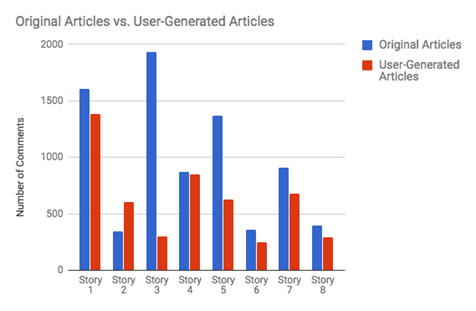For many newsrooms, the past few months have been a battlefield as resources strained under the pressure of tightened budgets and significant global events.
News organizations that have survived until now have adapted their processes to overcome the hurdles of working remotely, a higher demand for news and reduced staff. Moving forward, newsrooms will need to continue to embrace time-saving strategies to boost workplace efficiency.
“There’s been a lot of conversation about what a return to normal looks like,” says Jon Laurence, the supervising executive producer at AJ+. “And actually just as I don’t think that society is going to return to the old normal, I think that’s true of the press as well… the workflow changes that we’ve made… are just more efficient in some cases.”
Media companies can greatly reduce the time and effort they invest in various everyday tasks to focus on higher-value work. To accomplish this, all they need to do is put a few simple strategies into action.
Explore three ways media companies can save their newsrooms time and energy below.
Automating Comment Moderation
Perhaps one of the largest lessons media companies have discovered this year is that audience engagement is everything when it comes to building sustainable reader revenue. And commenting tools that are properly moderated are key to developing engaged, loyal community members.
However, effective comment moderation often requires a massive amount of attention, time and training from staff.
That’s where machine-based automation comes in.
Newsrooms can enlist the help of moderation engines, equipped with artificial intelligence and machine learning qualities, to manage toxic comments. Instead of relying on staff to manually skim comment threads, automatic moderation systems can instantly identify and block incivility from the moment a user tries to publish a comment.
This means that machine automation in the newsroom, like automated comment moderation, has the power to free up time for journalists and editors.
Just be sure to select a moderation system that can detect all 6.5 million variations of each toxic word, understand local language and support your community guidelines.
Concerned that automating comment moderation will threaten employee jobs?
Rather than eliminating the need for staff, Francesco Marconi, a journalism professor at Columbia University, explains that machines “will in fact reorient editors and journalists towards value-added content.”
Outsourcing Moderation on Your Social Spaces
Although machines are capable of detecting most forms of toxicity in social spaces, humans are still needed to train any intelligent algorithm and manage trolls. Together, the combination of automatic and human moderation can keep your community protected from spam and offensive content.
But that doesn’t mean you have to overwhelm your staff with moderation responsibilities. You can transfer the burden of human moderation to a highly trained third-party provider. As a result, newsroom staff will have more time to establish strong connections with digital visitors.
“[Outsourcing moderation can save] yourself time and resources that can be better spent engaging directly with your users,“ explains Leigh Adams, director of moderation at Viafoura, in a recent webinar. “Making sure that you’re highlighting [your most active users’] content [and] featuring their comments… allows your readership to feel like they’re part of the ecosystem and feel valued.”
Consider making the most of third-party moderation by outsourcing the heavy lifting for your owned and operated properties as well as your social media accounts.
Pulling Content Ideas Directly From the Community
Journalists and editors understand that pitching content ideas is an art form. Coming up with original, relevant ideas that resonate with audience members time and time again can be a painstaking process for newsroom staff.
To take some of the guesswork out of the content-creation process, news companies are finding content inspiration directly from their communities. More specifically, media organizations have started to produce high-performing content by asking community members about their information needs.
Not only can leveraging content ideas from the community save staff time researching topics to pitch, but it can also help to secure strong relationships with readers.
Anna Nirmala, vice president of the American Journalism Project, emphasizes that, in the coming months, “[it] will be understood that having a relevant and trusted brand is linked to building relationships and engaging with the community.”
Ultimately, asking your readers what they’re interested in reading about — whether that be through social tools, surveys or another method of communication — will save staff time and energy while paving the way for highly trusted and engaging content.
By reducing time-consuming tasks in the newsroom, staff can spend more time creating positive user experiences that matter to visitors.








